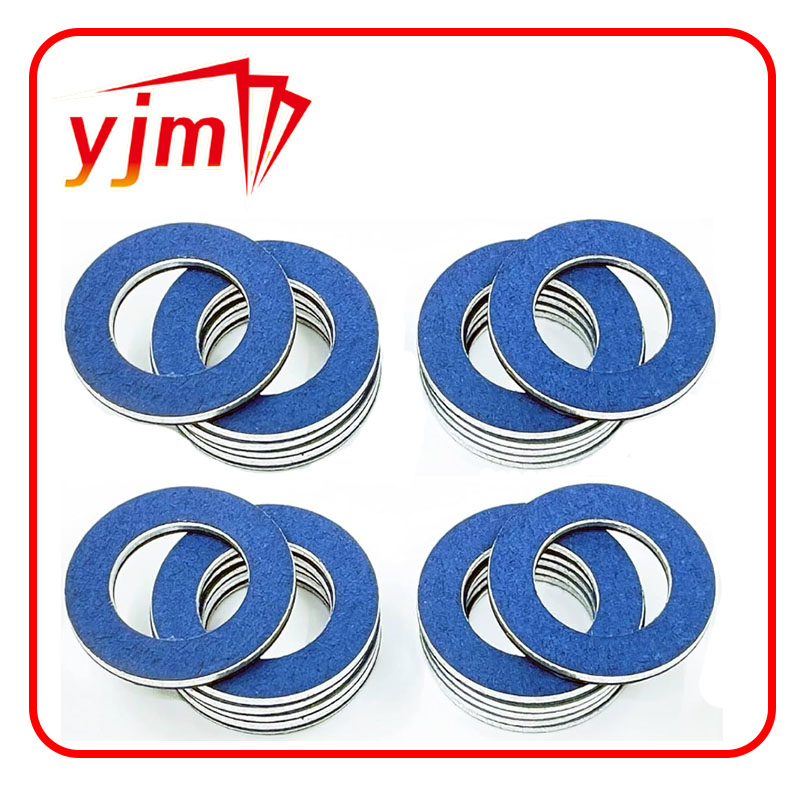heat resistant o rings
Understanding Heat Resistant O-Rings Essential Components for High-Temperature Applications
O-rings are simple yet essential components used in various industries to create seals between surfaces. Among the many types of O-rings, heat resistant O-rings play a crucial role in applications where temperatures can soar beyond the ordinary limits. These specialized seals are engineered to maintain their integrity and functionality in high-temperature environments, ensuring reliability and safety in diverse systems.
What are Heat Resistant O-Rings?
Heat resistant O-rings are typically made from materials that exhibit exceptional thermal stability. Common materials include fluorocarbon (Viton), silicone, and certain high-performance elastomers. Each of these materials comes with specific attributes that make them suitable for high-temperature operations.
For example, Viton is known for its excellent resistance to heat, chemical deterioration, and compression set, making it a preferred option for automotive and aerospace industries. In contrast, silicone O-rings offer flexibility at extreme temperatures, both high and low, making them ideal for applications involving temperature fluctuations.
Importance of Temperature Resistance
In many applications, failure to maintain a proper seal can lead to severe consequences, including leaks, equipment damage, or safety hazards. Heat resistant O-rings are designed to withstand temperatures that regular O-rings cannot, often surviving in environments exceeding 200°C (392°F) and sometimes reaching up to 300°C (572°F) or higher. The ability of these O-rings to function correctly in extreme conditions is essential for industries like oil and gas, automotive, aerospace, and manufacturing.
heat resistant o rings

Applications of Heat Resistant O-Rings
1. Automotive Industry In vehicles, heat resistant O-rings are used in coolant systems and engine seals where high-temperature environments are common. They help prevent leaks where fluids are circulating at elevated temperatures.
2. Aerospace Sector The aerospace industry relies heavily on these components to ensure fuel, hydraulic fluids, and other critical substances remain contained under the stress of high-altitude conditions and extreme temperature variations.
3. Oil and Gas Extraction These rings are employed in drilling operations and other extraction processes where machinery operates at high temperatures and pressure. Ensuring a tight seal is crucial to maintain operational efficiency and safety.
4. Manufacturing Many production processes involve equipment that generates substantial heat. Using heat resistant O-rings ensures that machinery runs smoothly without interruptions caused by seal failures.
Conclusion
Heat resistant O-rings are indispensable in modern engineering and manufacturing, providing safe and reliable sealing for high-temperature applications. Choosing the right material for specific conditions is critical for ensuring longevity and performance. As industries continue to evolve and face new challenges, the demand for high-quality heat resistant O-rings will surely grow, emphasizing their importance in maintaining the integrity of complex systems. Investing in these components not only enhances performance but also contributes significantly to operational safety across various sectors.
-
The Ultimate Guide to Car Repair Kits: Tools and Essentials Every Driver Should Own
News Aug.01,2025
-
The Complete Guide to Oil Pan Gaskets: Sealing Engine Leaks the Right Way
News Aug.01,2025
-
Preventing Oil Leaks: A Complete Guide to Oil Pan Gaskets and Drain Seals
News Aug.01,2025
-
Everything You Need to Know About Oil Pan Gaskets and Drain Plug Seals
News Aug.01,2025
-
Essential for Car Owners: How to Use a Car Repair Kit to Deal with Minor Breakdown
News Aug.01,2025
-
Comprehensive Guide to Engine Oil Sump Gaskets and Related Seals
News Aug.01,2025
-
The Ultimate Guide to Boat Propeller Bearings and Trailer Wheel Bearings
News Jul.31,2025
Products categories















